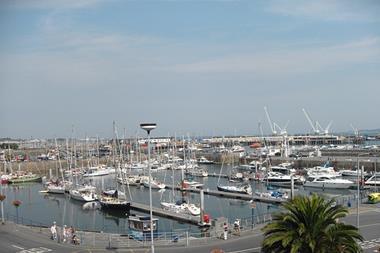The days when having a captive could produce some significant tax benefits for its parent company have largely disappeared. But fiscal authorities are still prepared to challenge where they feel a captive is providing an unfair advantage
The International Association of Insurance Supervisors’ issues paper on the regulation and supervision of captive insurance companies sums up the current situation. “Although tax minimisation may have been an early driver for captive formations, many tax authorities have now largely eliminated tax minimisation advantages through CFC [controlled foreign companies] tax legislation that consolidates the profits of captives with those of the captives’ parent companies. Where this is not the case, the possibility of deferring tax through the use of a captive still does exist. This could lead to some misuse of the captive where excessive premiums are charged and profits artificially inflated,” it says.
CFC laws are common to most OECD member states. There have been recent revisions - for example, in Italy and Spain - but the key aim of preventing tax evasion remains.
Offshore domiciles are generally free to set their own direct tax rules. Domiciles in the EU must apply the relevant EU directives when it comes to governing captives but can charge differing taxation rates.
This is not to say that everything in the captive taxation garden is rosy. This year the tiny principality of Liechtenstein, the domicile for some European continental captives, fell foul of the regulators.
While not a member of the EU, Liechtenstein is a member state of the European Free Trade Association (EFTA) which, with the EU, comprises the European Economic Area (EEA). Its reputation as a low-tax haven has in the past attracted the interest of the OECD and national governments, with pressure to improve its financial regulations and apply greater banking transparency.
The latest challenge came from EFTA, which last year concluded that tax exemptions available to certain types of companies under the Liechtenstein Tax Act were incompatible with the EEA agreement. It also ordered that aid granted to captive insurance companies should be recovered.
The Liechtenstein Tax Act exempts captive insurance companies from payment of corporate income and coupon tax, and provides that they pay only half the rate of capital tax applicable to other companies. The authority concluded that such favourable treatment provided the companies with an advantage that was unavailable to other companies in a similar position. Liechtenstein - later joined by two captives registered in the principality, Reassur Aktiengesellschaft and Swisscom Re - disputed the decision.
Judgment was given by the EFTA court this year in favour of the surveillance authority. Subsequently, Liechtenstein’s government pointed out that its new law pertaining to the taxation of captives, which entered into force in 2011, is in accordance with the EEA agreement so the judgment has no bearing on the current tax situation in the principality.
The case illustrates the need for captive owners to keep a careful eye on tax issues. KPMG’s 2010 Captive Insurance Benchmark study, Negotiating the Captive Insurance Terrain, acknowledges that over the years there have been a number of challenges to the accounting treatment of captives as insurance companies. But it reports that more than 90% of the study’s respondents indicated that the level of coordination between the risk management and tax departments addressing captive-related issues was either moderate or high.
“The majority (more than 80%) of respondents indicated they hold periodic meetings with the tax department to coordinate captive issues,” says the report.
The study also shows that risk managers may see a need to increase the tax department’s comfort level regarding its position on the tax treatment of captives. Sixty per cent endeavoured to do this with strategies that included:
• Citing rulings
• Citing case law
• Citing examples of other captives
• Obtaining outside professional consultation.
UK rules on captives as controlled CFCs
Most OECD member states have CFC laws.
As an example, UK provisions are summarised below.
• A UK company that has a relevant interest (25% or more) in a captive insurer is subject to the same CFC rules as any other UK company. Unless the CFC meets the requirements of the excluded countries list and the exempt activities test, and passes the motive test, its profits will have to be apportioned to the UK company.
• To fall within the definition of a CFC a company must be subject to a lower level of taxation. Applying this standard may require particular care in the case of general insurance companies because of the potential for significant differences between provisioning and loss equalisation rules that apply in different territories, and the possible application of funded (non-annual) accounting.
• Tax paid by ‘international companies’ in certain offshore financial centres is treated as tax for comparison purposes.
• While captives are unlikely to benefit from the excluded countries list, they may pass the exempt activities test. All companies carrying on exempt activities must occupy premises in the domicile and the business affairs must be effectively managed there and this requires a suitable staffing presence.
• As an insurance company falls within the definition of a wholesale, distributive or financial trader, the test cannot be passed where more than 50% of commissions or net (of reinsurance) premiums are derived directly or indirectly from connected or associated persons, or from persons with at least a 10% interest in the company, and which are attributable directly or indirectly to the liability of an associate.
• Premiums paid via a fronting company will be treated as from an associate, so long as the insured liability is that of an associate. A captive wishing to benefit from this test must therefore insure the liability of third parties. This is most commonly encountered in warranty insurance and creditor insurance arrangements.




















No comments yet